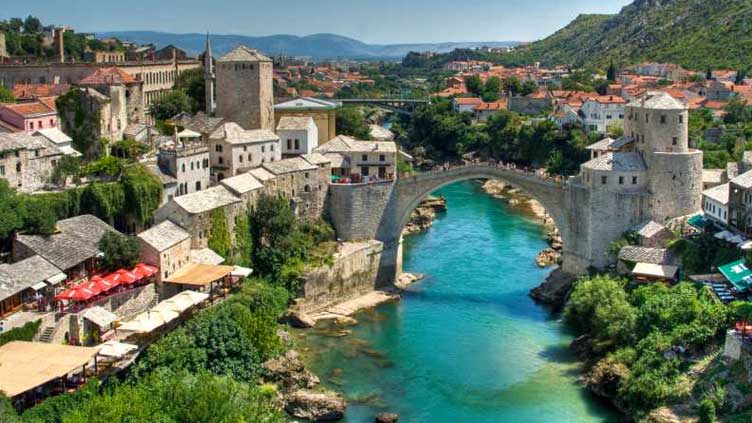So much more than wars: five things about Bosnia

World
Bosnia's capital Sarajevo has been the unfortunate scene of violent events.
SARAJEVO (AFP) - While Bosnia is often associated with bloody wars, the Balkan country is also home to stunning landscapes, a vibrant multicultural history and one very large bunker.
Here are five things to know about the troubled nation that holds general elections on Sunday.
- The shot and the siege -
Bosnia’s capital Sarajevo has been the unfortunate scene of violent events that have convulsed the world far beyond its borders.
The assassination of Archduke Franz Ferdinand, the heir to the throne of the Austro-Hungarian empire by a Bosnian Serb gunman there in June 1914, was the spark that ignited World War I.
Vienna accused Serbia of being responsible, setting off a chain of alliances that plunged the world into war and led to the death of millions.
Decades later, war devastated the Bosnian capital again during the breakup of Yugoslavia.
As the socialist federation crumbled, a string of conflicts broke out, with the war in Bosnia seeing some of the worst fighting that eventually triggered a NATO intervention.
An estimated 100,000 people died, including thousands of Muslim men and boys massacred by Serb forces in Srebrenica.
In Sarajevo, Bosnian Serb forces laid siege to the capital for nearly four years, with regular shelling and sniper fire killing more than 10,000 people.
- Water, water -
Bosnia may be one of Europe’s poorest countries but it is rich in one resource: water.
The World Bank estimates Bosnia’s resources of renewable fresh water at nearly 10 cubic metres (350 cubic feet) per person per year.
Some of Europe’s most pristine rivers run through the country’s rugged terrain, making it a paradise for rafters, kayakers and other outdoor enthusiasts.
- Primeval forests -
The Balkan country boasts one of Europe’s last virgin forests, a 1,300-hectare (3,200-acre) spread of trees in the east of the country called Perucica.
Partially inaccessible due to its hilly terrain, the lush forest can only be visited with rangers.
Bosnia is pressing for it to be included in UNESCO’s World Heritage list.
- Tito’s den -
Bosnia is also home to a massive nuclear bunker built for former Yugoslav leader Josip Broz Tito.
It took 26 years and $4.5 billion to cut the horseshoe-shaped shelter into the side of a mountain near the southern town of Konjic. It can hold 350 people.
Today the 6,500 square-metre (70,000 square-foot) bunker is a contemporary art museum.
- Mosques, churches and a synagogue -
While Bosnia today is known for its divided communities, Sarajevo still boasts relics of its diverse past.
Many buildings were damaged during the war in the 1990s, but the city is still sprinkled with historic mosques, churches and a synagogue.
As Yugoslavia collapsed around them, Sarajevans believed their city’s multi-ethnic character would serve as protection.
But the capital eventually became a focal point of the inter-ethnic war that pitted Serbs, Croats and Bosnian Muslims against each other.
Today the city is overwhelmingly Muslim. Bosniaks, as they are known, make up 82 percent of the population.

